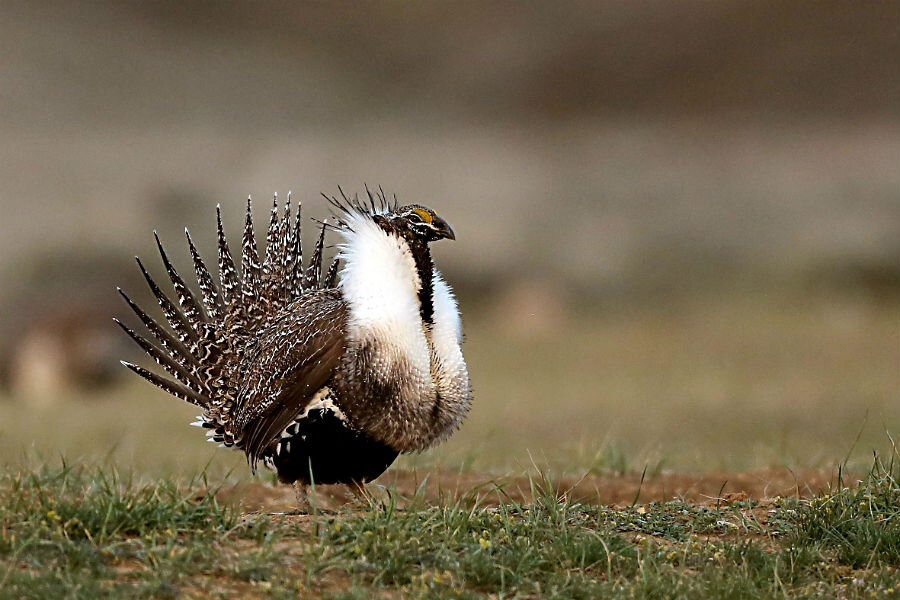Sage grouse battle: A case of bad science?
Loading...
The greater sage grouse, known for its iconic mating dance, is back in the legal hot seat.
In September, officials for the US Fish and Wildlife Service announced that the ground bird would not be listed as needing protection under the Endangered Species Act, despite its population having plummeted from several million to 200,000 - 500,000. Instead, the Department of the Interior launched a system of land-use regulations to protect the bird. This program blocked development on millions of acres of federal land in 10 Western states.
But now a group of Nevadans are suing over these restrictions, claiming that politics – not science – drove officials' decisions.
The group of ranchers, miners, lawyers representing nine Nevada counties and Nevada Attorney General Adam Laxalt cite government documents in their federal court filing claiming the protections were not motivated by good science. The plaintiffs want to void the resulting policies.
The attorneys say three Interior Department officials, who named themselves "Grouseketeers," acted illegally when they consulted conservationists outside of the designated public comment period.
The filing says that the Fish and Wildlife Service outlined the protected areas "based on maps and information from the 'conservation community' and then BLM unlawfully ignored the Nevada Department of Wildlife who demonstrated the boundaries were inconsistent with the state's data and actual science."
The plaintiffs also say that the Fish and Wildlife Service, Forest Service and the Bureau of Land Management rushed the process because of the pressure of a looming deadline, as a decision had to be made by Sept. 30 whether or not the sage grouse would be listed as endangered.
"The administrative record reveals astonishing overreach and disregard for public involvement and statutory requirements to impose a top-down policy engineered by three officials in the Department of Interior," Reno attorney Laura Granier wrote on behalf of the plaintiffs. "There was a political agenda rather than a scientific basis for requiring withdrawals and absolute prohibitions on development and use."
This group has filed a suite twice before, starting in September, with the goal of voiding or at least suspending the land-use restrictions until a supplemental environmental impact statement is conducted in line with the proper planning process and with public comment. Both previous attempts were unsuccessful.
When the protections were launched in September, the White House hailed the decision as "an historic win for conservation and communities in the West and for the United States." The statement celebrated cooperation among government officials, federal agencies, ranchers, and environmental groups, and the oil industry alike across 11 states.
This report contains material from The Associated Press.








